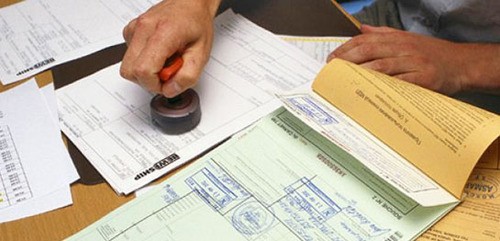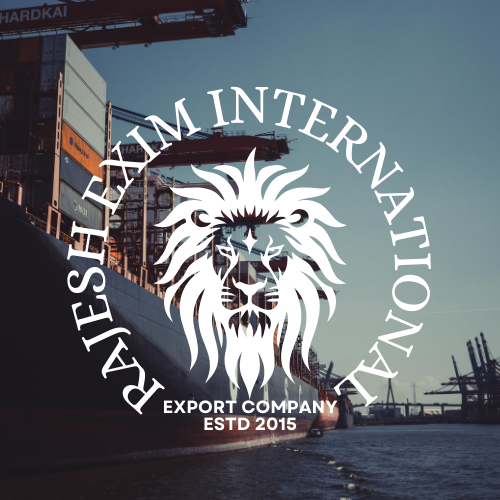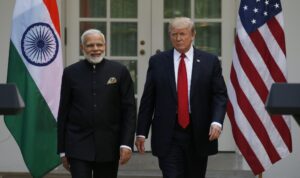- Introduction
- Brief overview of the challenges of customs clearance for importers in India.
- Understanding the Basics of Customs Clearance
- Definition and significance of customs clearance.
- Key players involved in the customs clearance process.
- Documentation Essentials
- List of required documents for smooth customs clearance.
- Importance of accurate and complete documentation.
- Customs Duties and Taxes
- Explanation of different customs duties and taxes imposed in India.
- Tips on how to calculate and plan for these expenses.
- Hiring a Customs Broker
- Advantages of hiring a customs broker.
- How to choose the right customs broker for your business.
- Navigating Customs Tariffs
- Understanding the Indian Customs Tariff and its implications.
- Strategies to minimize tariff-related expenses.
- Compliance with Regulatory Requirements
- Overview of regulatory requirements for imported goods.
- Consequences of non-compliance and how to avoid them.
- Utilizing Free Trade Agreements
- Explanation of Free Trade Agreements (FTAs) and their benefits.
- Tips on leveraging FTAs for cost-effective customs clearance.
- Effective Communication with Customs Authorities
- Importance of clear communication with customs officials.
- Tips for maintaining transparency and resolving issues promptly.
- Technology Solutions for Customs Clearance
- Overview of technological tools that streamline customs clearance.
- How automation can reduce errors and expedite the process.
- Common Pitfalls to Avoid
- Identification of common mistakes made during customs clearance.
- Tips on how to prevent and address these pitfalls.
- Case Studies: Success Stories in Customs Clearance
- Real-life examples of businesses successfully navigating customs clearance.
- Lessons learned and best practices from these cases.
- Continuous Education and Updates
- Importance of staying informed about changes in customs regulations.
- Resources for ongoing education and updates in the field.
- Building Strong Relationships with Customs Officials
- The significance of relationship-building in the customs clearance process.
- Tips on establishing and maintaining positive connections.
- Conclusion
- Recap of key tips for making customs clearance easier for importers in India.
Customs Clearance Made Easy: Tips for Importers in India
Importing goods into India can be a lucrative venture, but the process of customs clearance often poses challenges for businesses. Understanding the nuances of customs procedures is essential for a smooth and cost-effective importation process.
Introduction
Navigating through the intricacies of customs clearance in India can be perplexing for importers. From understanding documentation requirements to calculating customs duties, there are various aspects that demand attention. In this article, we’ll delve into practical tips to make customs clearance a breeze for importers in India.
Understanding the Basics of Customs Clearance
Definition and Significance
Customs clearance is the process by which imported goods are authorized to enter or leave a country. In India, this involves a series of checks and verifications to ensure compliance with regulatory standards. The significance of smooth customs clearance cannot be overstated, as delays or errors can incur additional costs and impact business operations.
Key Players Involved
The customs clearance process in India involves multiple stakeholders, including customs officials, importers, exporters, and customs brokers. Each plays a crucial role in ensuring the efficient movement of goods across borders.
Documentation Essentials
Successful customs clearance begins with accurate and complete documentation. Importers must be well-versed in the paperwork required for their specific goods. Incomplete or inaccurate documentation can lead to delays and penalties. Key documents include the commercial invoice, bill of lading, packing list, and certificates of origin.
Customs Duties and Taxes
Understanding Different Duties and Taxes
Importers must grasp the various customs duties and taxes imposed in India. These may include basic customs duty, countervailing duty, and special additional duty. Calculating and planning for these expenses is vital for budgeting and pricing strategies.
Tips for Calculating and Planning
To ease the financial burden of customs duties and taxes, importers should explore duty drawback schemes and exemptions available for specific goods. Accurate classification of goods according to the Indian Customs Tariff is crucial for determining the applicable duties.
Hiring a Customs Broker
Advantages of Professional Assistance
Navigating the customs clearance process alone can be overwhelming. Hiring a customs broker can significantly simplify the process, as these professionals are well-versed in customs regulations and procedures.
Choosing the Right Customs Broker
When selecting a customs broker, consider their expertise, reputation, and track record. A reliable broker will facilitate smooth communication with customs authorities, minimizing the risk of errors or delays.

Navigating Customs Tariffs
Understanding the Indian Customs Tariff
The Indian Customs Tariff classifies goods for the purpose of levying customs duties . Importers should familiarize themselves with the tariff to accurately assess the applicable duties for their products.
Strategies for Minimizing Tariff Expenses
To minimize tariff-related expenses, importers can explore strategies such as value engineering, tariff engineering, and utilization of duty-free exemptions. Proper classification of goods is key to optimizing costs.
Compliance with Regulatory Requirements
Overview of Regulatory Requirements
Compliance with regulatory requirements is non-negotiable in customs clearance. Importers must adhere to product standards, labeling requirements, and other regulations to avoid penalties and confiscation of goods.
Consequences of Non-Compliance
Failure to comply with regulatory requirements can result in hefty fines and the seizure of goods. Regular audits and internal checks can help ensure ongoing compliance.
Utilizing Free Trade Agreements
Explanation of FTAs and Benefits
Free Trade Agreements (FTAs) can offer significant advantages in terms of reduced or eliminated customs duties. Importers should explore existing FTAs between India and other countries to maximize cost savings.
Leveraging FTAs for Cost-Effective Clearance
To leverage FTAs effectively, importers must ensure their goods meet the specified rules of origin. Proper documentation proving compliance with FTA requirements is crucial for availing benefits.
Effective Communication with Customs Authorities
Importance of Clear Communication
Clear communication with customs authorities is paramount. Importers should promptly respond to inquiries, provide accurate information, and address any issues to prevent delays in clearance.
Tips for Maintaining Transparency
Establishing open lines of communication with customs officials fosters transparency and can result in smoother clearance processes. Building a positive rapport can prove beneficial in resolving issues amicably.
Technology Solutions for Customs Clearance
Overview of Technological Tools
Technology plays a significant role in streamlining customs clearance. Importers can leverage software solutions and automation tools to reduce errors, track shipments, and expedite the clearance process.
Automation for Efficiency
Automation not only enhances efficiency but also minimizes the risk of manual errors. Electronic data interchange (EDI) and customs clearance software can facilitate seamless communication between stakeholders.
Common Pitfalls to Avoid
Identification of Common Mistakes
Several common pitfalls can hinder the customs clearance process. These may include incorrect documentation, misclassification of goods, and undervaluation. Importers must be vigilant to avoid these pitfalls.
Preventing and Addressing Pitfalls
Implementing robust internal controls, providing ongoing training for staff, and conducting regular audits can help prevent common pitfalls. In the event of an issue, prompt communication and resolution are key.
Case Studies: Success Stories in Customs Clearance
Real-Life Examples
Examining real-life success stories provides valuable insights into effective customs clearance strategies. Case studies highlight the challenges faced, the solutions implemented, and the positive outcomes achieved.
Lessons Learned and Best Practices
Importers can learn from the experiences of others, adopting best practices and refining their customs clearance processes based on successful case studies.
Continuous Education and Updates
Importance of Staying Informed
Customs regulations are subject to change. Importers must stay informed about updates and changes in laws, tariffs, and procedures to ensure ongoing compliance.
Resources for Ongoing Education
Attending workshops, webinars, and industry conferences can provide valuable updates. Additionally, subscribing to relevant publications and government notifications keeps importers abreast of regulatory changes.
Building Strong Relationships with Customs Officials
Significance of Relationship-Building
Building strong relationships with customs officials can contribute to smoother clearance processes. Personal connections can facilitate communication and resolution of issues.
Tips for Relationship-Building
Being courteous, responsive, and proactive in addressing any concerns raised by customs officials can go a long way in fostering positive relationships. Regular engagement and collaboration build trust over time.
Conclusion
In conclusion, navigating customs clearance in India requires a strategic and well-informed approach. By understanding the basics, investing in professional assistance, leveraging technology, and staying informed, importers can streamline the process and minimize challenges.
FAQs
- Do I need to hire a customs broker for every shipment?
- While it’s not mandatory, hiring a customs broker can significantly simplify the customs clearance process, especially for complex shipments.
- How often do customs regulations change in India?
- Customs regulations can undergo changes periodically. Importers should stay updated by regularly checking official government notifications.
- Can technology completely replace the need for human involvement in customs clearance?
- Technology can streamline processes, but human oversight and expertise remain crucial for ensuring accuracy and compliance.
- What are the common penalties for non-compliance in customs clearance?
- Penalties for non-compliance can include fines, confiscation of goods, and suspension of import/export privileges. Severity varies based on the nature of the violation.
- Are there any specific resources for understanding Free Trade Agreements in India?
- The Directorate General of Foreign Trade (DGFT) and official government websites provide information on existing FTAs and their provisions.







Add comment